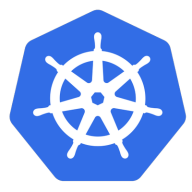

Kubernetes and Microsoft Defender for Cloud compete in cloud management and security. Kubernetes has the upper hand in container orchestration due to its flexibility and automation, while Microsoft Defender for Cloud excels in security management and threat detection.
Features: Kubernetes offers automation for container orchestration, supporting Docker containers, complex microservice management, and self-healing capabilities that ensure high availability. Microsoft Defender for Cloud provides security monitoring across workloads, with threat detection and compliance features. Its dashboard offers comprehensive insights for unified threat management.
Room for Improvement: Kubernetes struggles with setup complexity and user interface design, often needing third-party support and better legacy application integration. Microsoft Defender for Cloud has licensing complexity and configuration intuitiveness issues, and it could improve reporting and response times to security recommendations.
Ease of Deployment and Customer Service: Kubernetes, being open-source, is highly flexible but depends on community support, which can complicate deployment and troubleshooting. Microsoft Defender for Cloud benefits from centralized management and Microsoft support, with extensive documentation facilitating efficient deployment.
Pricing and ROI: Kubernetes is cost-effective as open-source but infrastructure costs can rise for smaller deployments. Microsoft Defender for Cloud offers various pricing options, including free versions, but bundles with Azure services for simplified cost management and robust ROI through its security offerings.
| Product | Market Share (%) |
|---|---|
| Kubernetes | 6.2% |
| Microsoft Defender for Cloud | 1.1% |
| Other | 92.7% |


| Company Size | Count |
|---|---|
| Small Business | 25 |
| Midsize Enterprise | 9 |
| Large Enterprise | 47 |
| Company Size | Count |
|---|---|
| Small Business | 26 |
| Midsize Enterprise | 7 |
| Large Enterprise | 45 |
Kubernetes (K8s) is an open-source system for automating deployment, scaling, and management of containerized applications.
It groups containers that make up an application into logical units for easy management and discovery. Kubernetes builds upon 15 years of experience of running production workloads at Google, combined with best-of-breed ideas and practices from the community.
Microsoft Defender for Cloud is a comprehensive security solution that provides advanced threat protection for cloud workloads. It offers real-time visibility into the security posture of cloud environments, enabling organizations to quickly identify and respond to potential threats. With its advanced machine learning capabilities, Microsoft Defender for Cloud can detect and block sophisticated attacks, including zero-day exploits and fileless malware.
The solution also provides automated remediation capabilities, allowing security teams to quickly and easily respond to security incidents. With Microsoft Defender for Cloud, organizations can ensure the security and compliance of their cloud workloads, while reducing the burden on their security teams.
We monitor all Container Management reviews to prevent fraudulent reviews and keep review quality high. We do not post reviews by company employees or direct competitors. We validate each review for authenticity via cross-reference with LinkedIn, and personal follow-up with the reviewer when necessary.